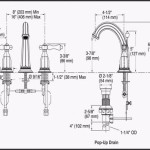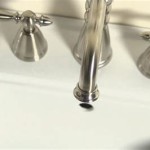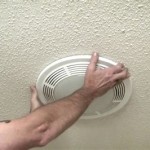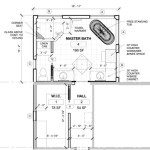Why Do Bathrooms Smell Musty?
A pervasive musty odor in a bathroom is a common, yet often frustrating, household issue. It signifies an underlying problem, typically related to moisture buildup and the subsequent growth of mold and mildew. Identifying the root cause is crucial for effectively eliminating the smell and preventing it from returning. Addressing a musty bathroom smell requires a systematic approach to pinpoint the source and implement appropriate remediation strategies.
Bathrooms are inherently humid environments. Showers, baths, and even handwashing contribute to elevated moisture levels. This humidity, coupled with inadequate ventilation, creates ideal conditions for microbial growth. The musty smell arises from the volatile organic compounds (VOCs) released by these microorganisms as they decompose organic matter.
Several factors can contribute to the persistent presence of moisture and the resulting musty odor. These factors include inadequate ventilation, leaks, porous materials, and improper cleaning practices. Thorough investigation is required to diagnose the specific cause in each individual bathroom.
Inadequate Ventilation: A Primary Contributor
Proper ventilation is paramount in minimizing moisture buildup within a bathroom. When showering or bathing, a significant amount of water vapor is released into the air. Without adequate ventilation, this moisture condenses on surfaces such as walls, ceilings, and mirrors. This condensation provides a breeding ground for mold and mildew, which are the primary sources of the musty odor.
Bathroom ventilation systems typically consist of exhaust fans. These fans are designed to draw moist air out of the bathroom and vent it to the exterior of the house. However, exhaust fans are only effective if they are properly sized, maintained, and used consistently. An undersized fan will not be able to adequately remove moisture, while a fan that is not properly maintained (e.g., clogged with dust) will have reduced airflow.
Furthermore, the use of the exhaust fan is critical. Many individuals fail to turn on the fan before showering or bathing, or they turn it off immediately afterward. This allows moisture to linger in the bathroom, increasing the risk of mold and mildew growth. Ideally, the exhaust fan should be turned on before showering or bathing and left running for at least 15-20 minutes afterward to ensure that all excess moisture is removed.
Natural ventilation, such as opening a window, can also be beneficial. However, natural ventilation is often less effective than mechanical ventilation, particularly in humid climates or during periods of high humidity. Furthermore, opening a window may not be practical or desirable in all situations.
If the bathroom lacks an exhaust fan, or if the existing fan is inadequate, upgrading the ventilation system is essential. A properly sized and functioning exhaust fan can significantly reduce moisture buildup and eliminate the musty odor. Consulting with a qualified HVAC professional can help determine the appropriate size and type of fan for a particular bathroom.
Hidden Leaks: A Silent Source of Moisture
Leaks, whether obvious or hidden, are a common cause of musty bathroom odors. Even small, seemingly insignificant leaks can provide a constant source of moisture, creating an environment conducive to mold and mildew growth. These leaks may originate from various sources, including leaky pipes, faulty faucets, damaged shower grout, or even roof leaks that penetrate the ceiling.
Obvious leaks, such as a dripping faucet or a visible water stain on the ceiling, are relatively easy to identify. However, hidden leaks can be more challenging to detect. These leaks may occur behind walls, under floors, or in other concealed areas. Signs of a hidden leak may include discoloration of drywall, peeling paint, a persistent dampness in a particular area, or an unexplained increase in water bills.
To identify hidden leaks, a thorough inspection of the bathroom is necessary. This inspection should include checking around sinks, toilets, showers, and bathtubs for any signs of water damage. Pay close attention to areas where pipes enter or exit the wall, as these are common locations for leaks to occur. Using a moisture meter can help detect hidden moisture behind walls or under floors.
Once a leak is identified, it is crucial to repair it promptly. Even a small leak can cause significant damage over time, leading to extensive mold and mildew growth and potentially compromising the structural integrity of the bathroom. Depending on the nature and location of the leak, professional plumbing services may be required.
In addition to repairing the leak, it is also important to address any existing mold or mildew growth. This may involve cleaning affected surfaces with a mold-killing solution or, in severe cases, removing and replacing damaged materials such as drywall or flooring.
Porous Materials and Improper Cleaning Practices: Contributing Factors
The materials used in bathroom construction can significantly impact the likelihood of moisture absorption and subsequent mold and mildew growth. Porous materials, such as unsealed grout, textured paint, and certain types of wallpaper, can readily absorb moisture, providing a breeding ground for microorganisms. Choosing moisture-resistant materials, such as ceramic tile, sealed grout, and moisture-resistant paint, can help minimize this risk.
Improper cleaning practices can also contribute to the development of a musty bathroom odor. Infrequent cleaning, or the use of ineffective cleaning products, can allow mold and mildew to flourish. Regularly cleaning the bathroom with appropriate cleaning solutions, including those specifically designed to kill mold and mildew, is essential for maintaining a clean and odor-free environment.
Particular attention should be paid to areas that are prone to moisture buildup, such as shower walls, grout lines, and the area around the toilet. These areas should be cleaned frequently with a mold-killing solution. Regularly wiping down surfaces after showering or bathing can also help prevent moisture buildup.
The use of bath mats and rugs can also contribute to moisture buildup if they are not properly maintained. Bath mats and rugs can trap moisture and provide a breeding ground for mold and mildew. Regularly washing and drying bath mats and rugs can help prevent this problem.
Furthermore, it is important to avoid leaving wet towels or clothing lying around in the bathroom. Wet towels and clothing can release moisture into the air, contributing to humidity and promoting mold and mildew growth. Hanging towels and clothing to dry properly can help minimize this risk.
Addressing a musty bathroom smell requires a comprehensive approach that addresses the root causes of moisture buildup and microbial growth. By ensuring adequate ventilation, repairing leaks promptly, choosing moisture-resistant materials, and implementing proper cleaning practices, it is possible to eliminate the musty odor and create a healthy and pleasant bathroom environment.

Bathroom Smells Musty Causes And Solutions

My Bathroom Smells Musty You Re Not Alone Mr Rooter

Help My Bathroom Smells Musty What Should I Do Phyxter Home Services

Help My Bathroom Smells Musty What Should I Do Phyxter Home Services

Why Is There A Bad Smell In My Bathroom M J Burt

Help My Bathroom Smells Musty What Should I Do Phyxter Home Services

New Bathroom Smells Musty Causes And Solutions

What Is Causing The Musty Smell In My Bathroom

Musty Smells In The House Finding Them And Getting Rid Of

New Bathroom Smells Musty Causes And Solutions
Related Posts







